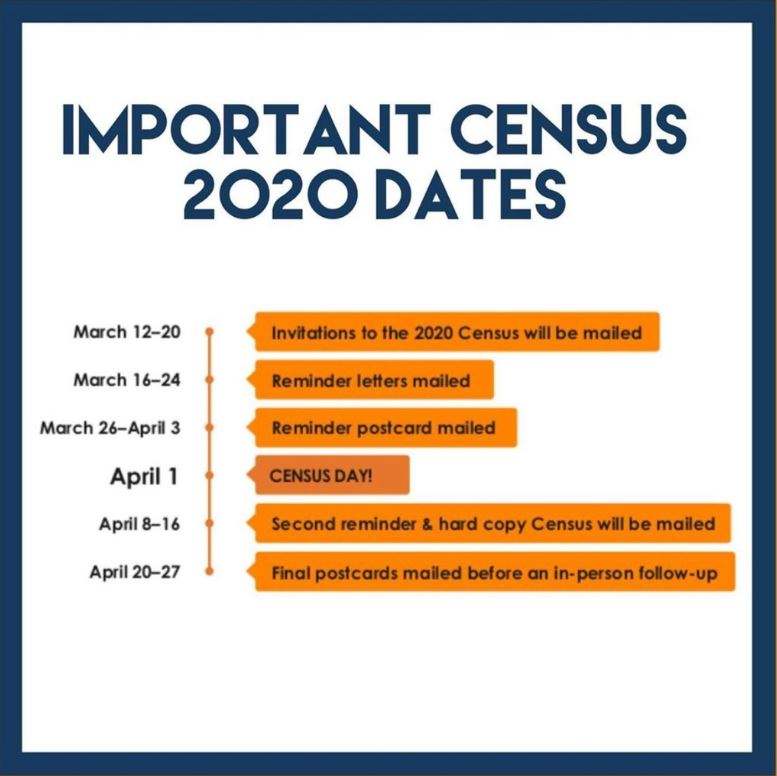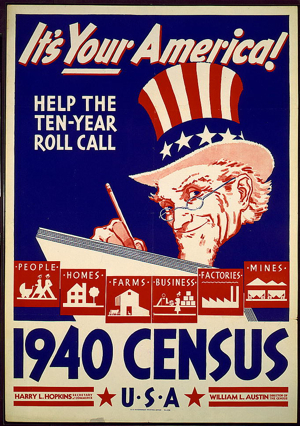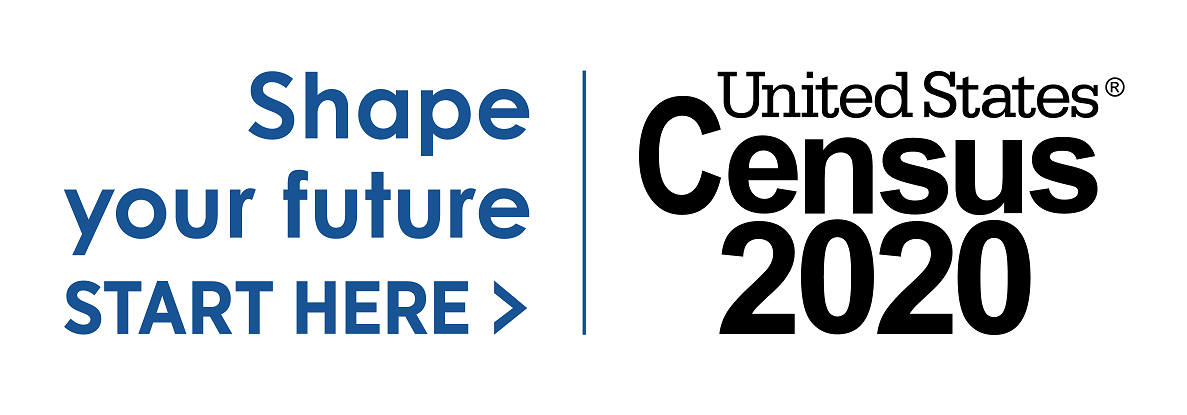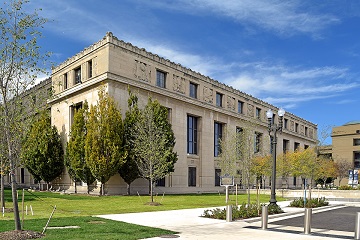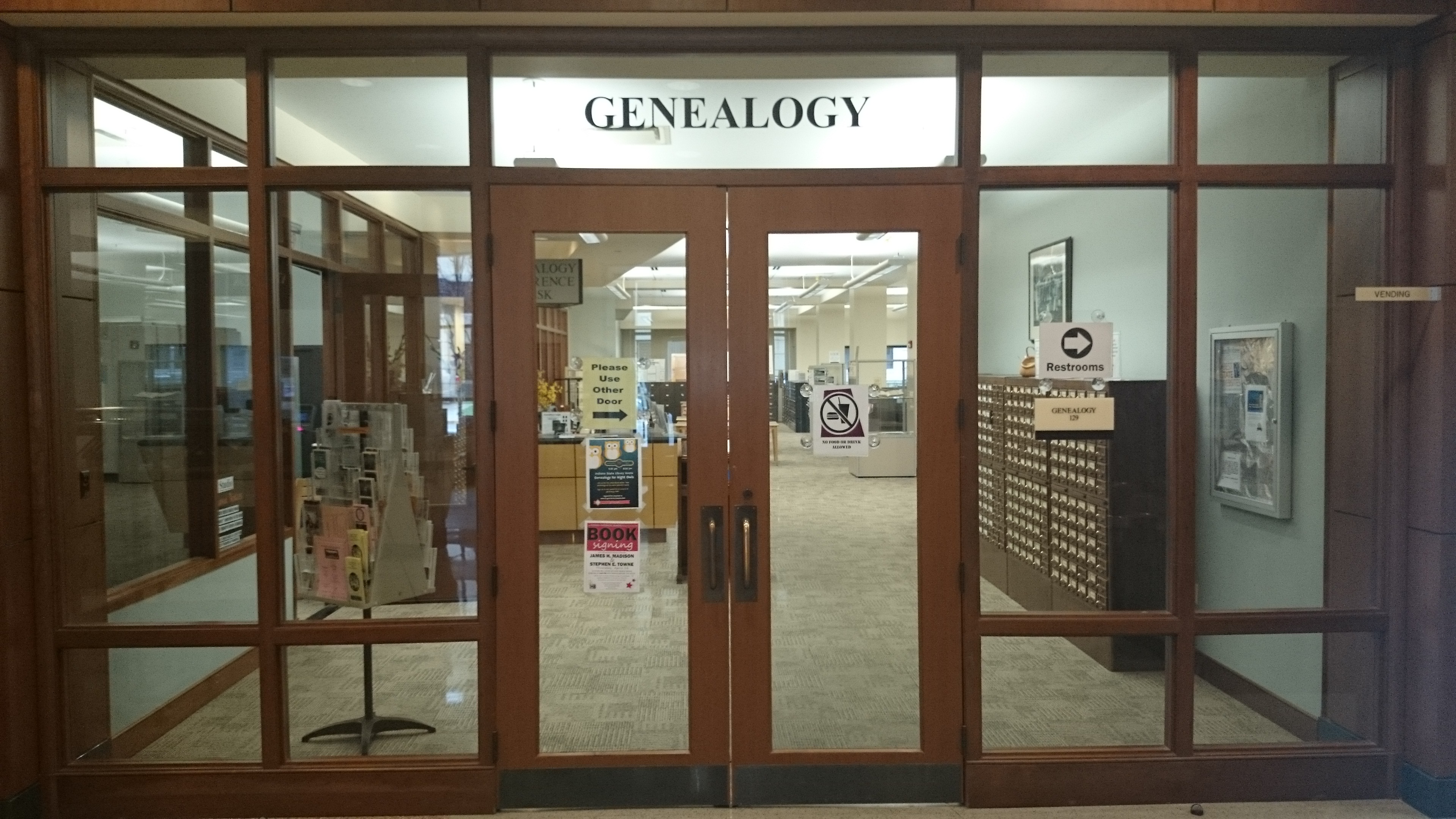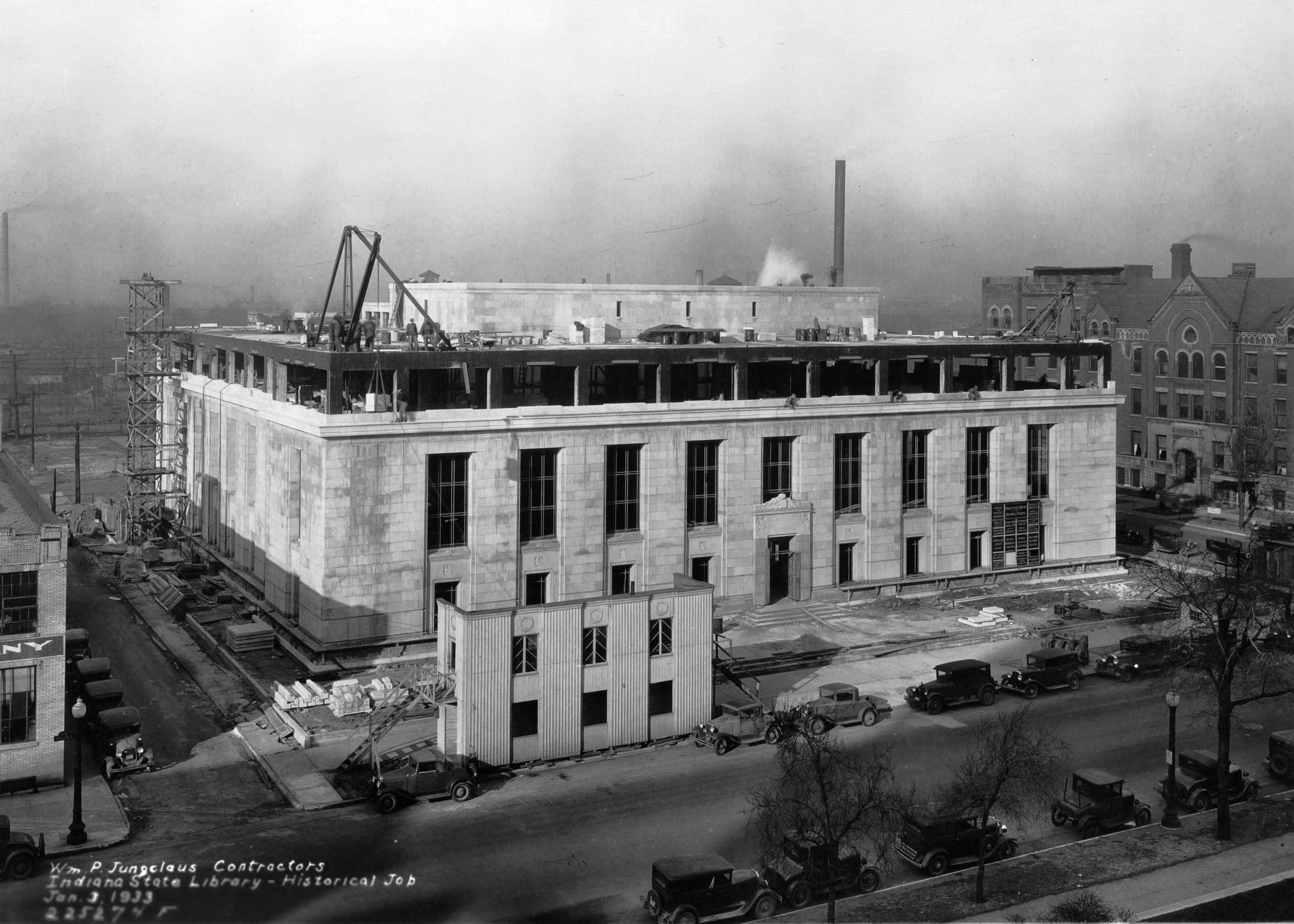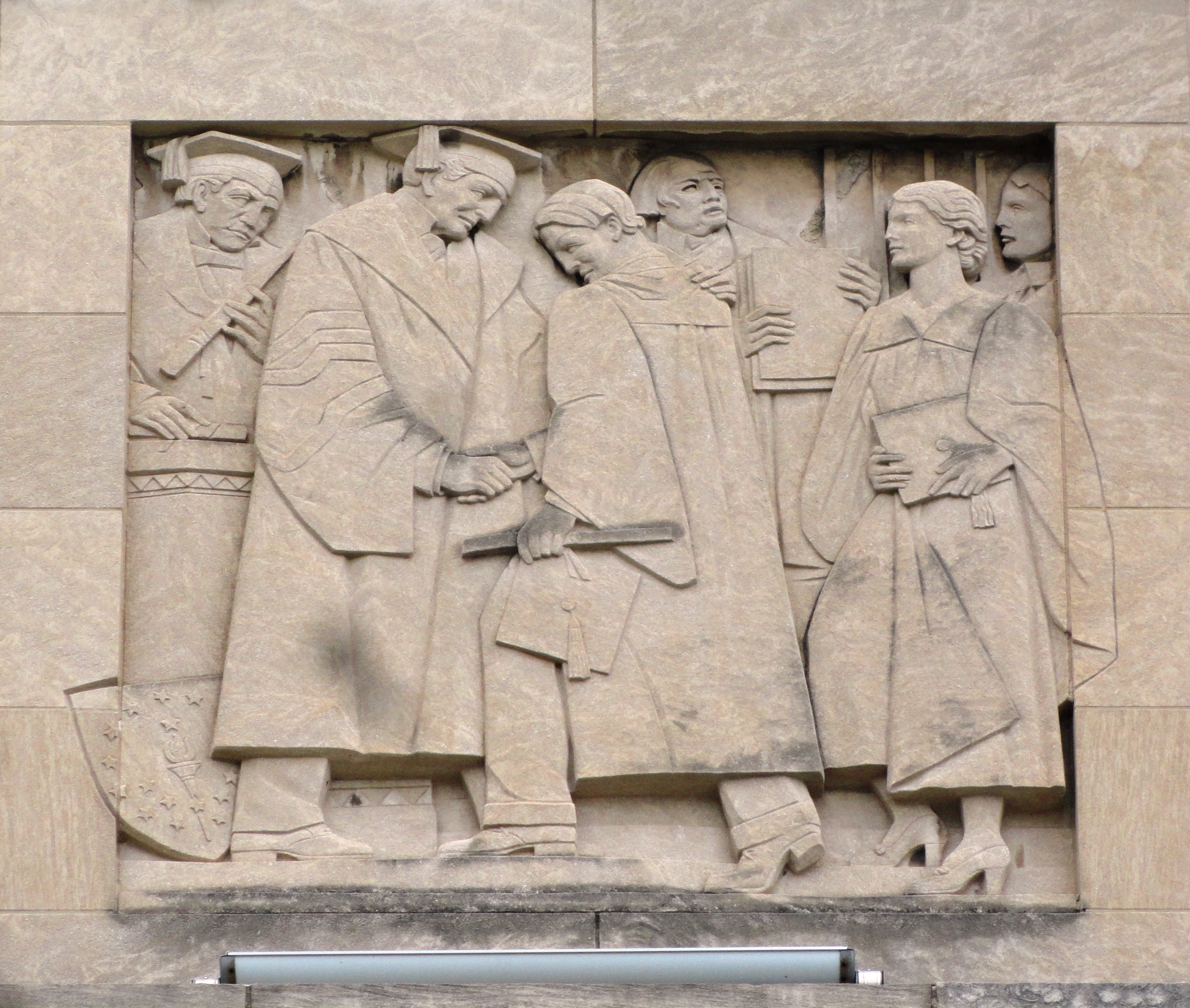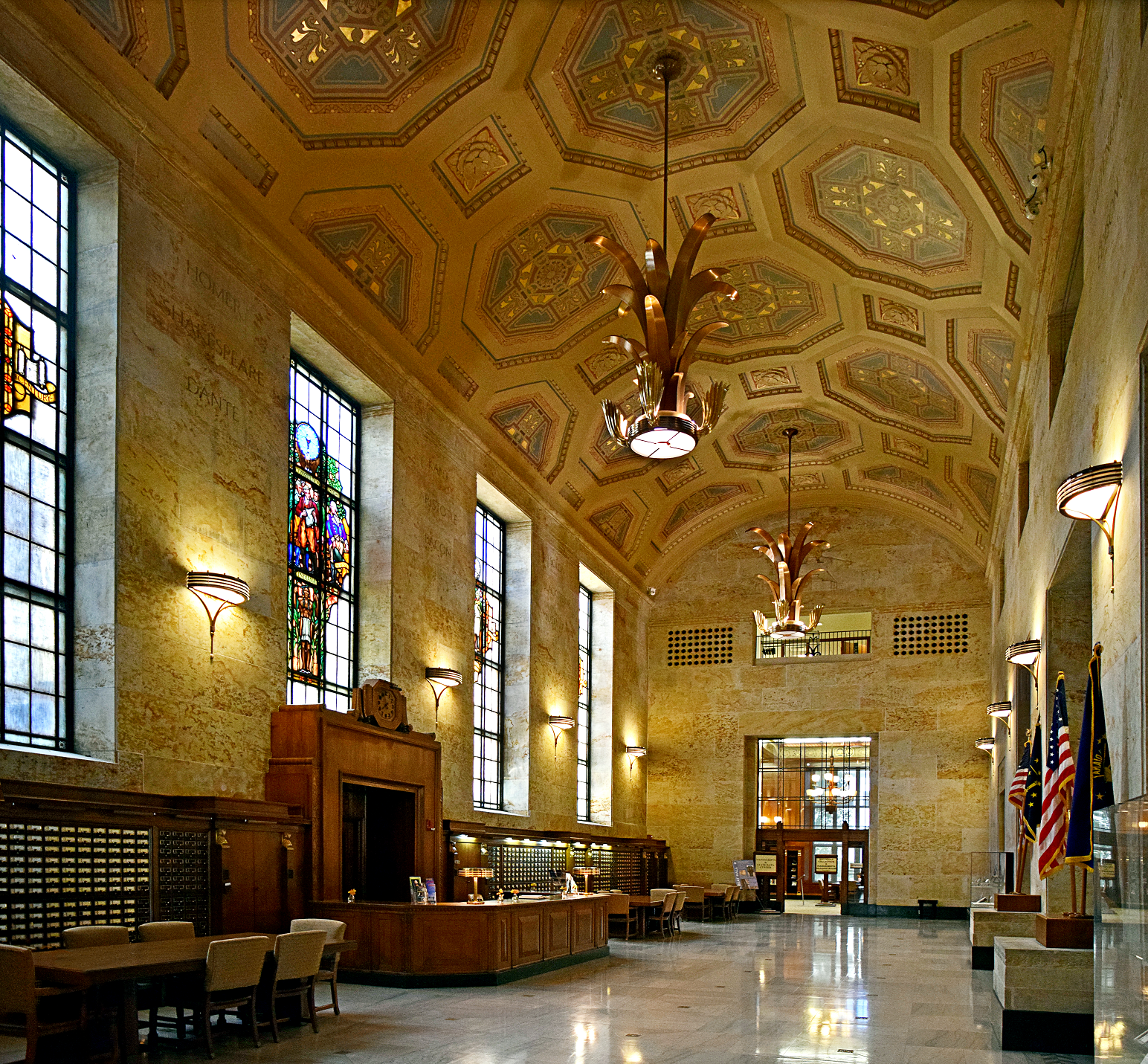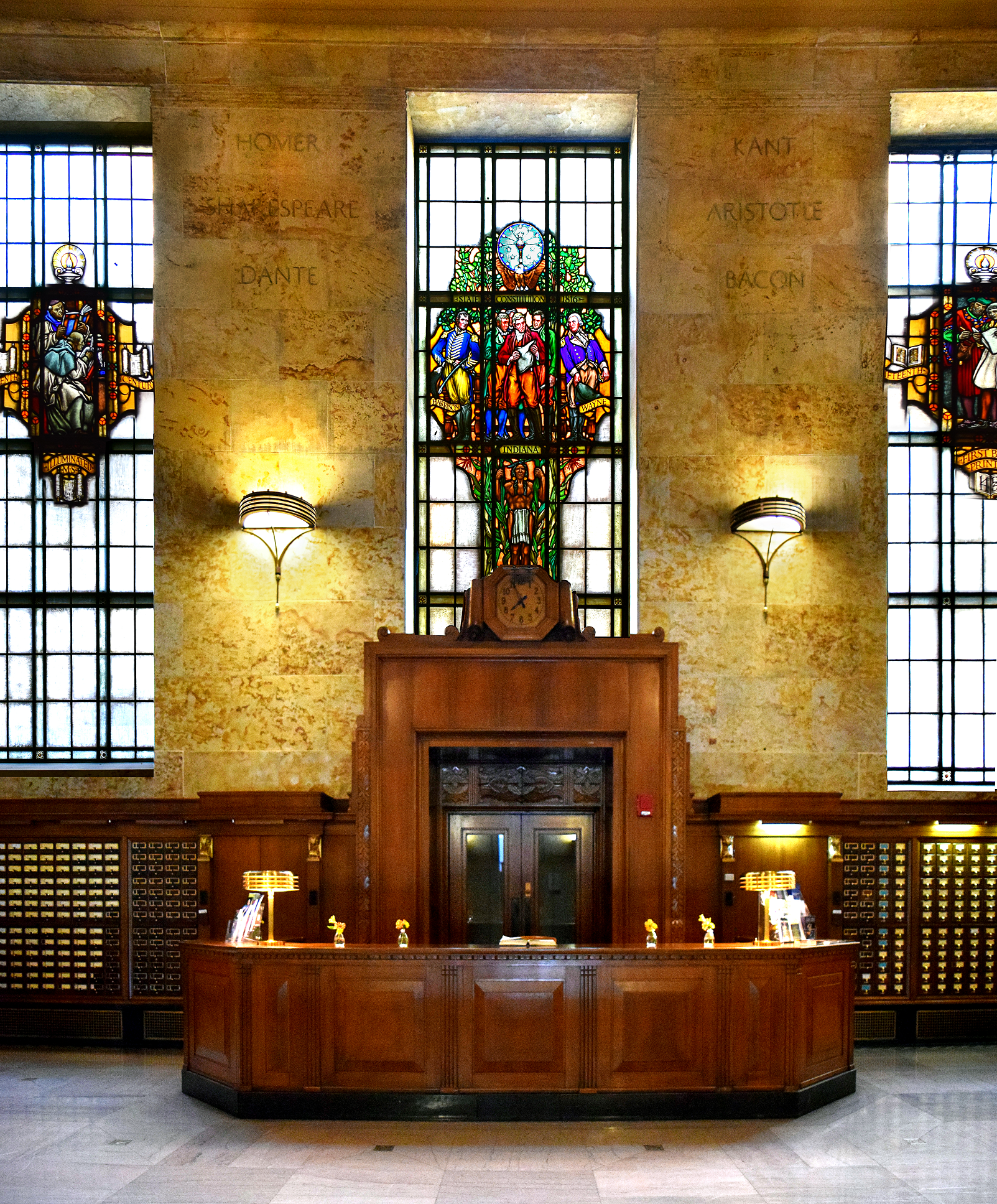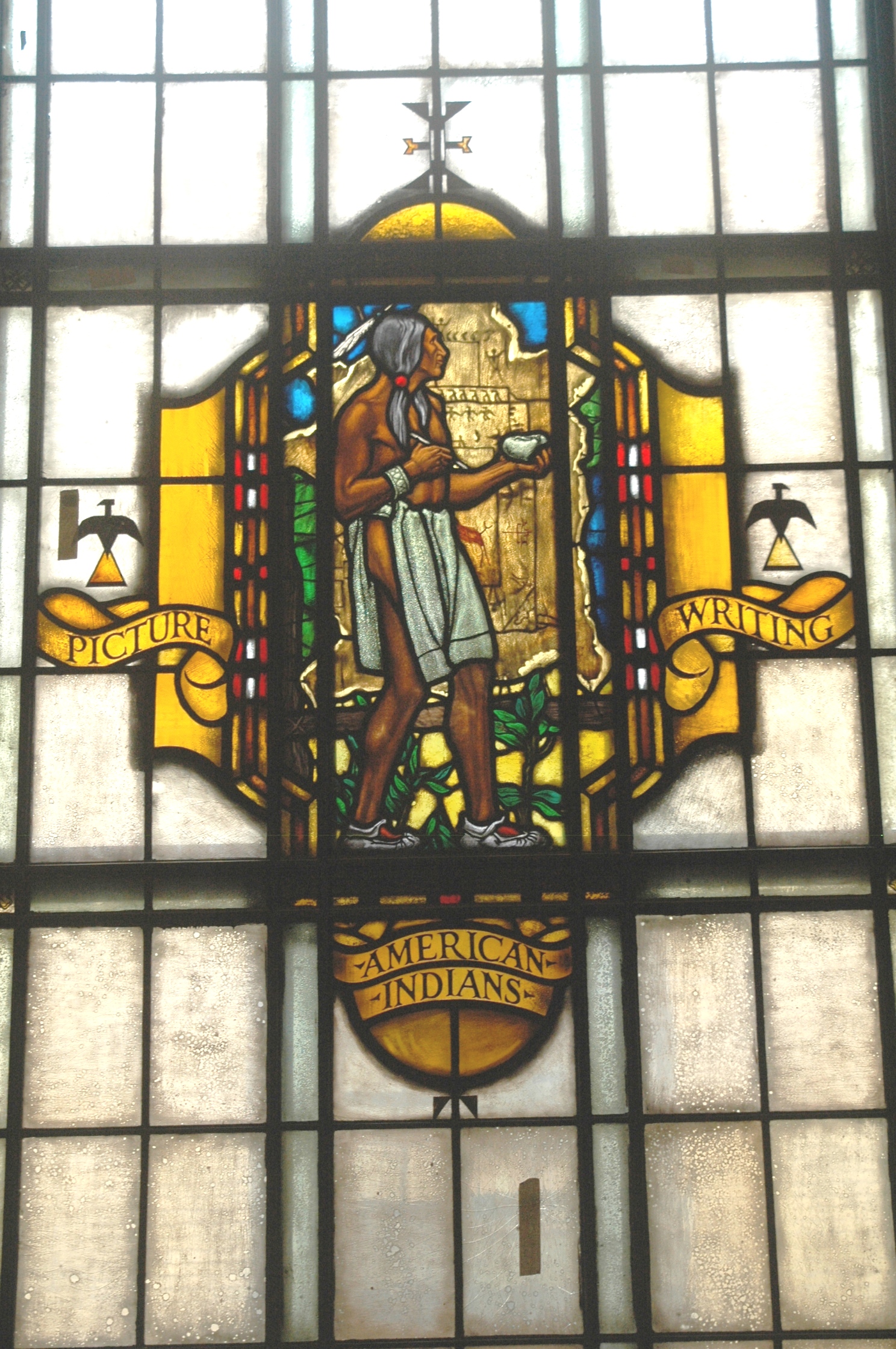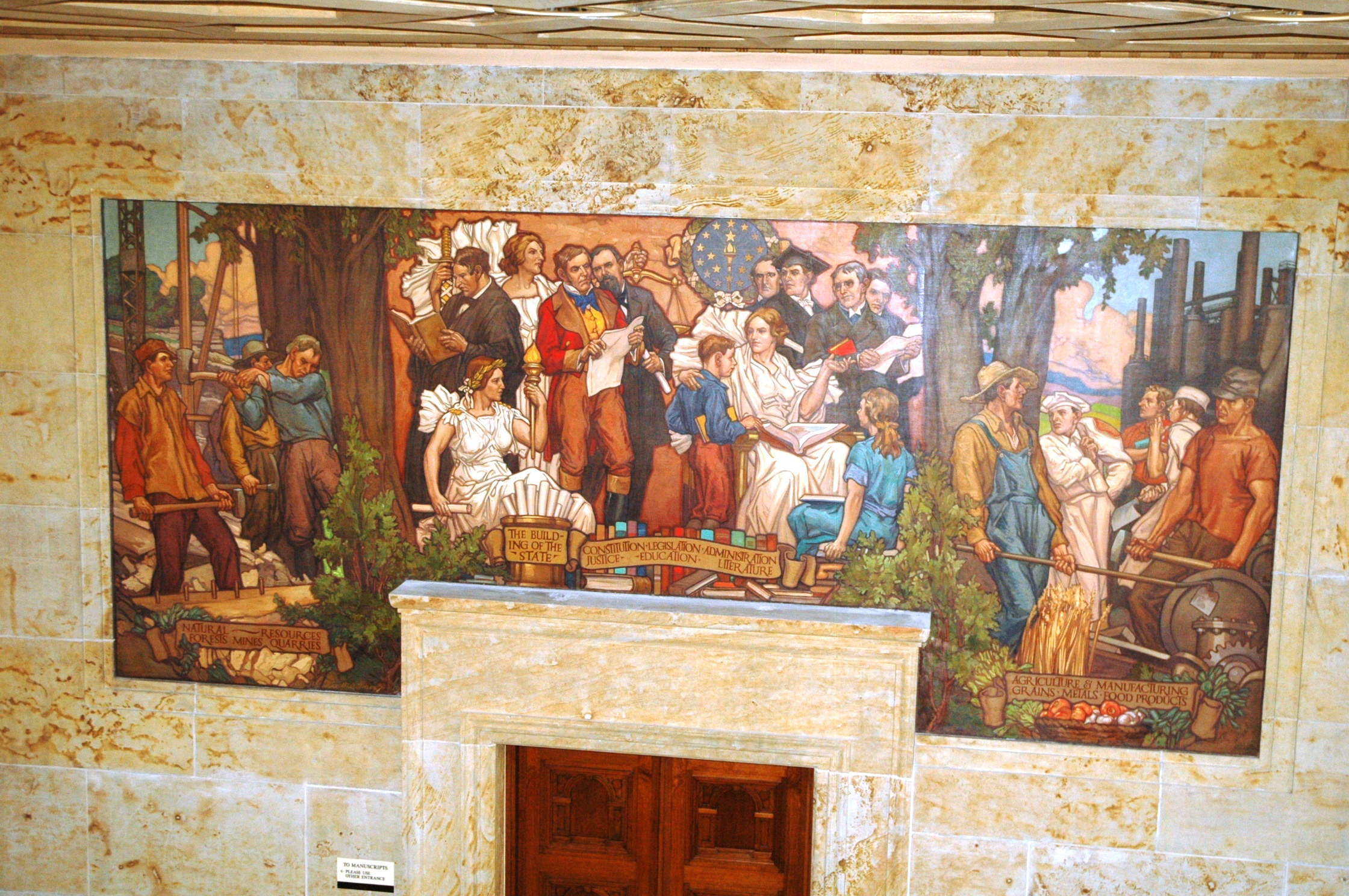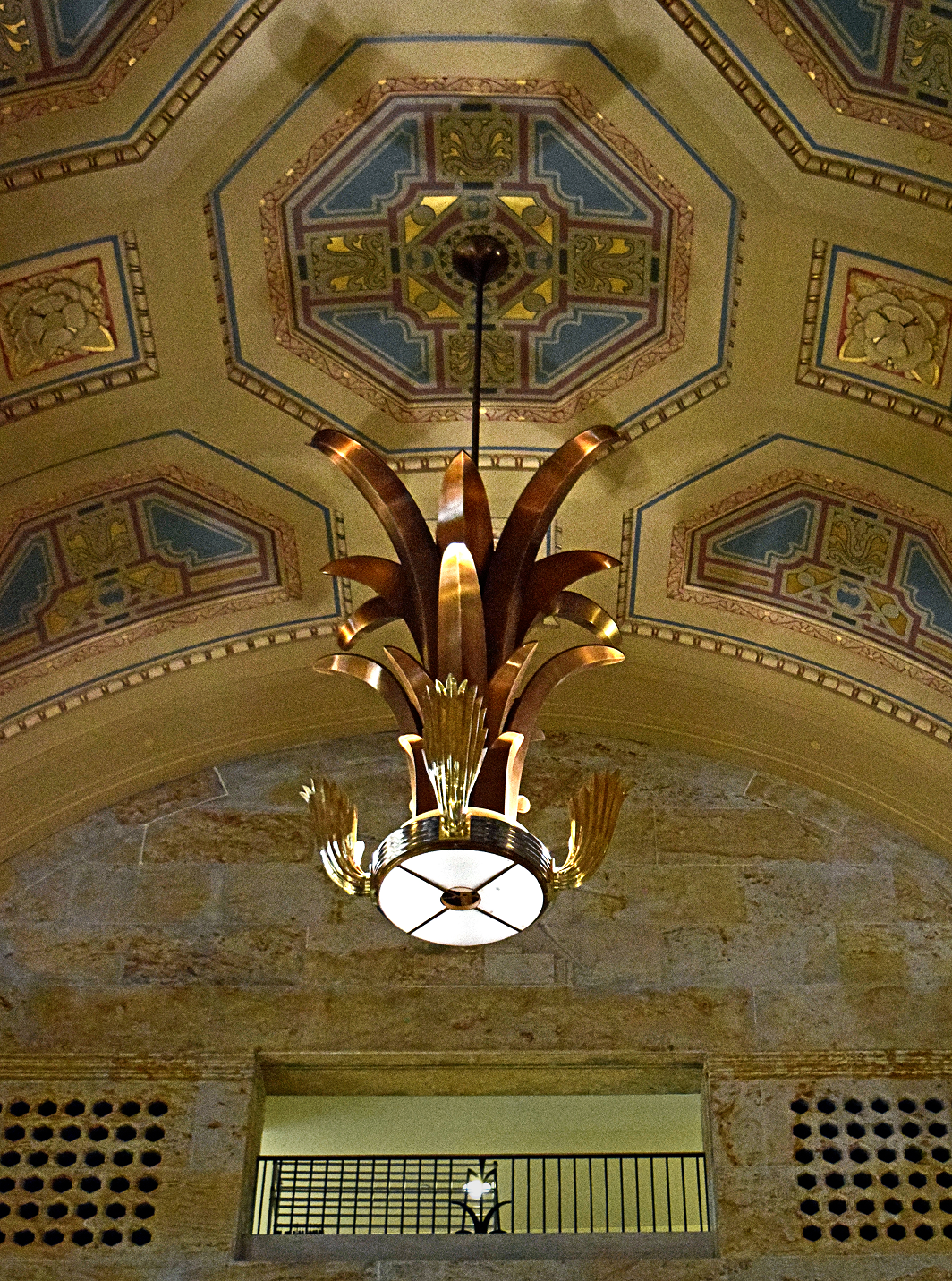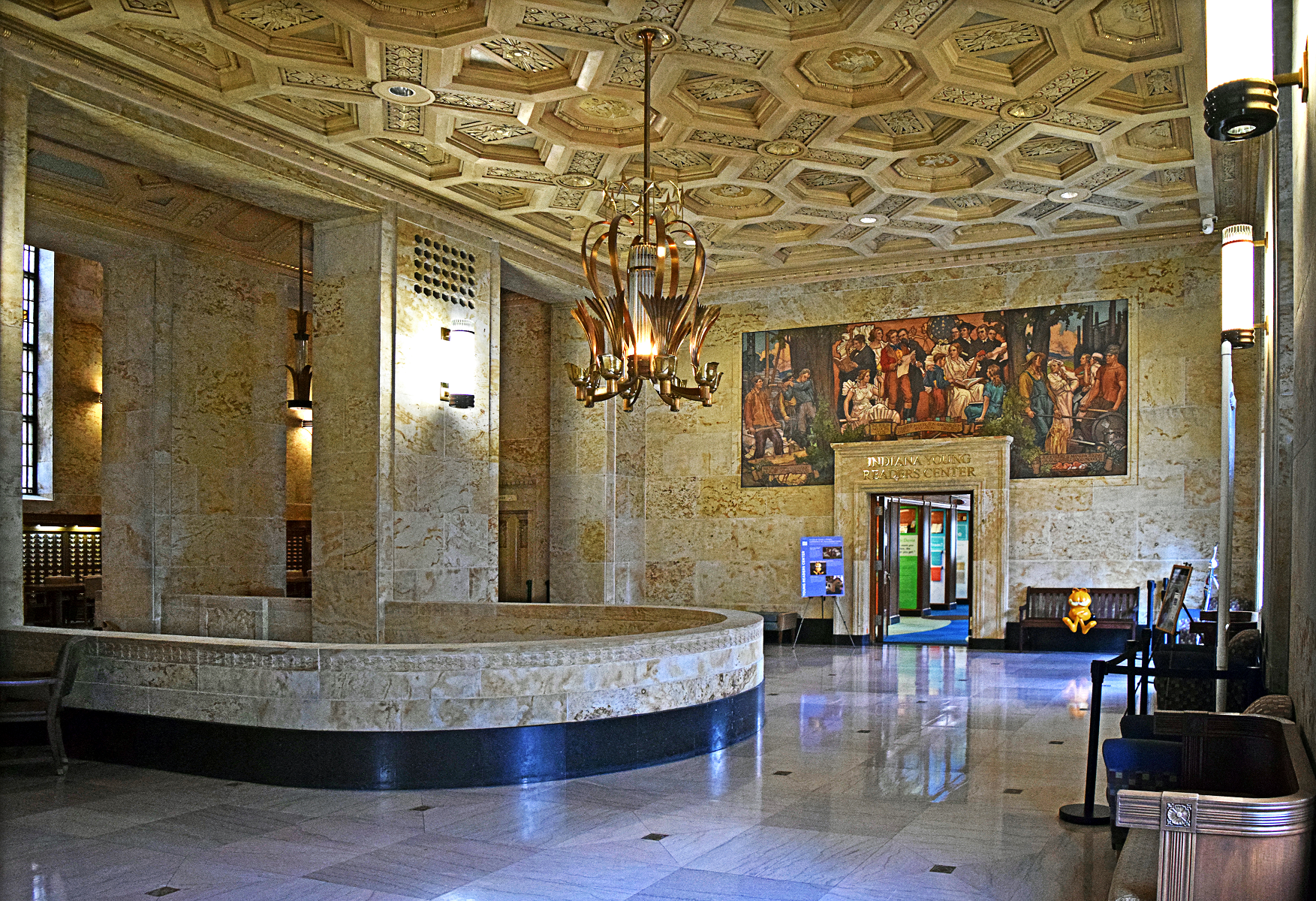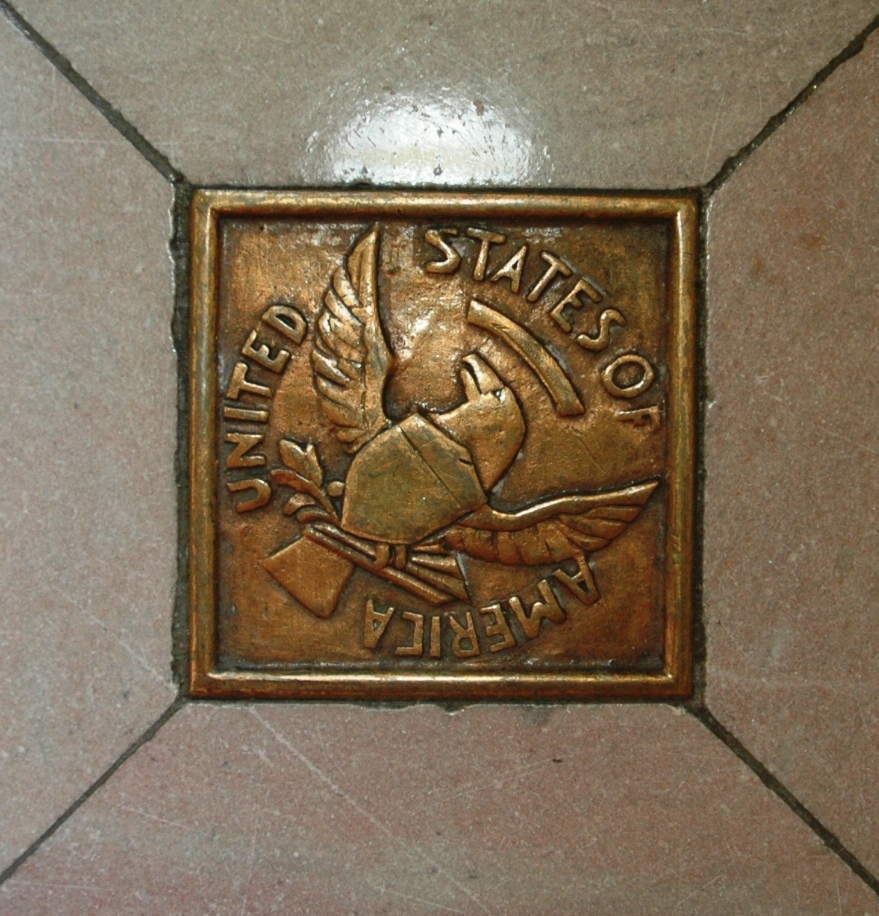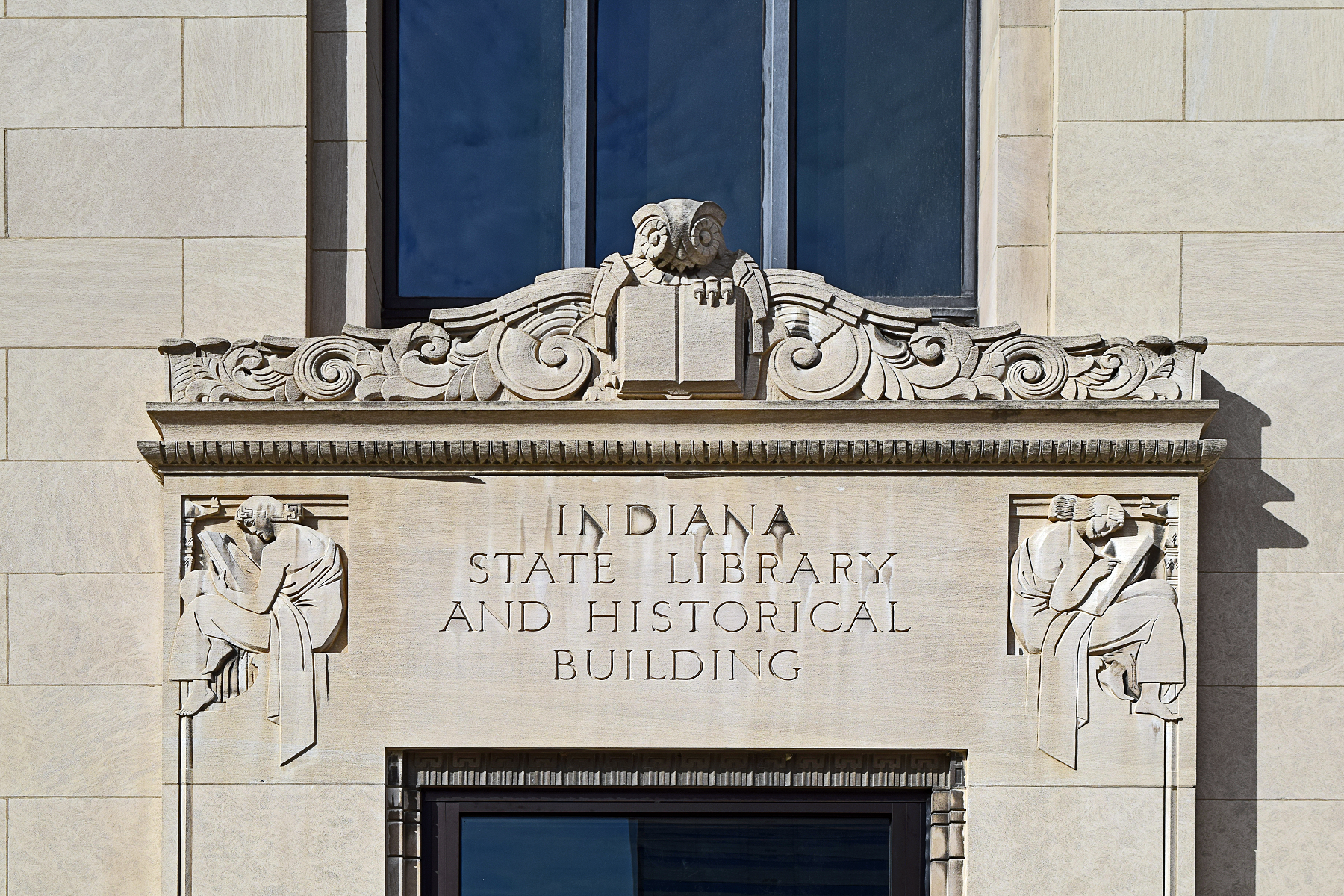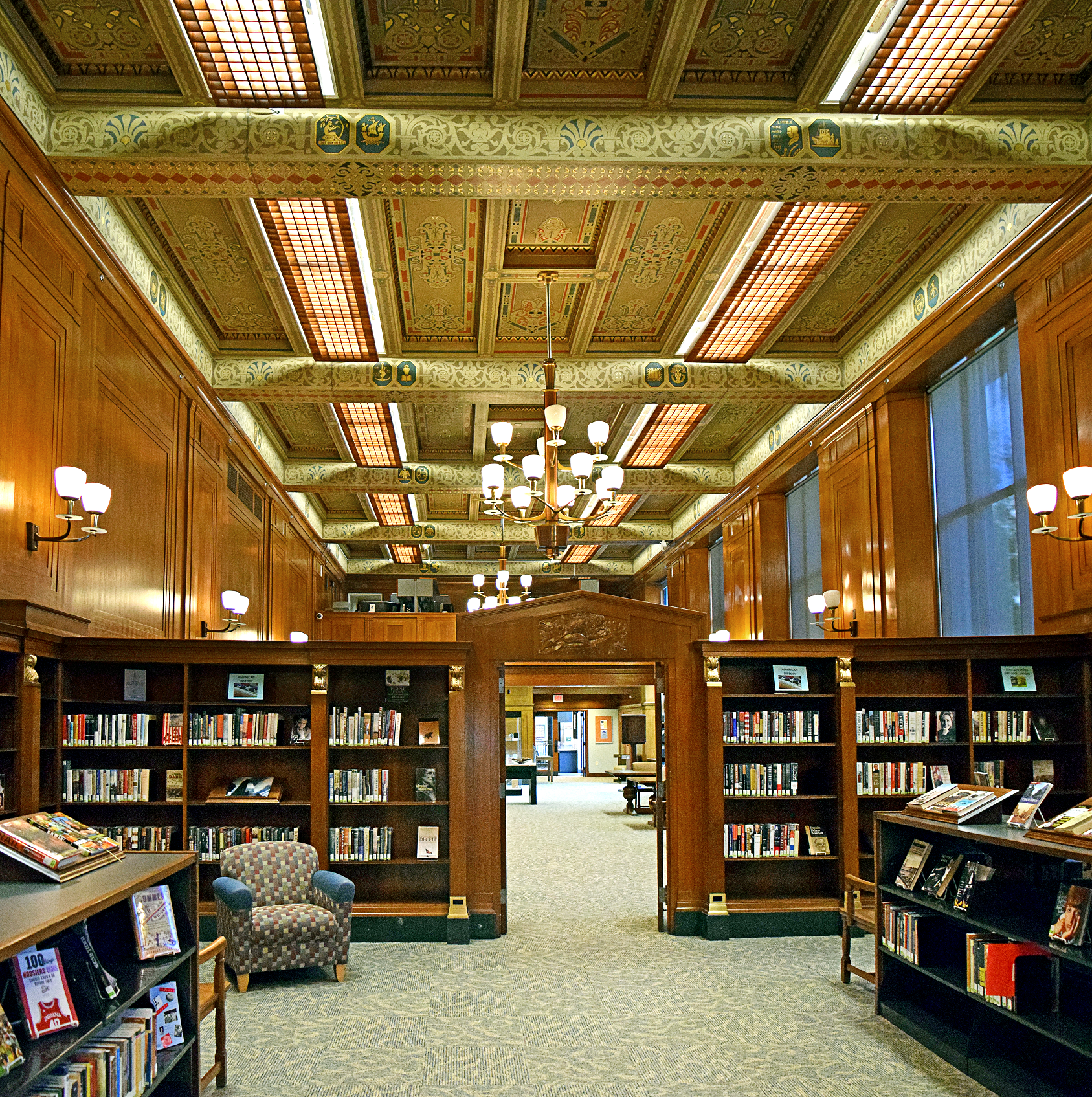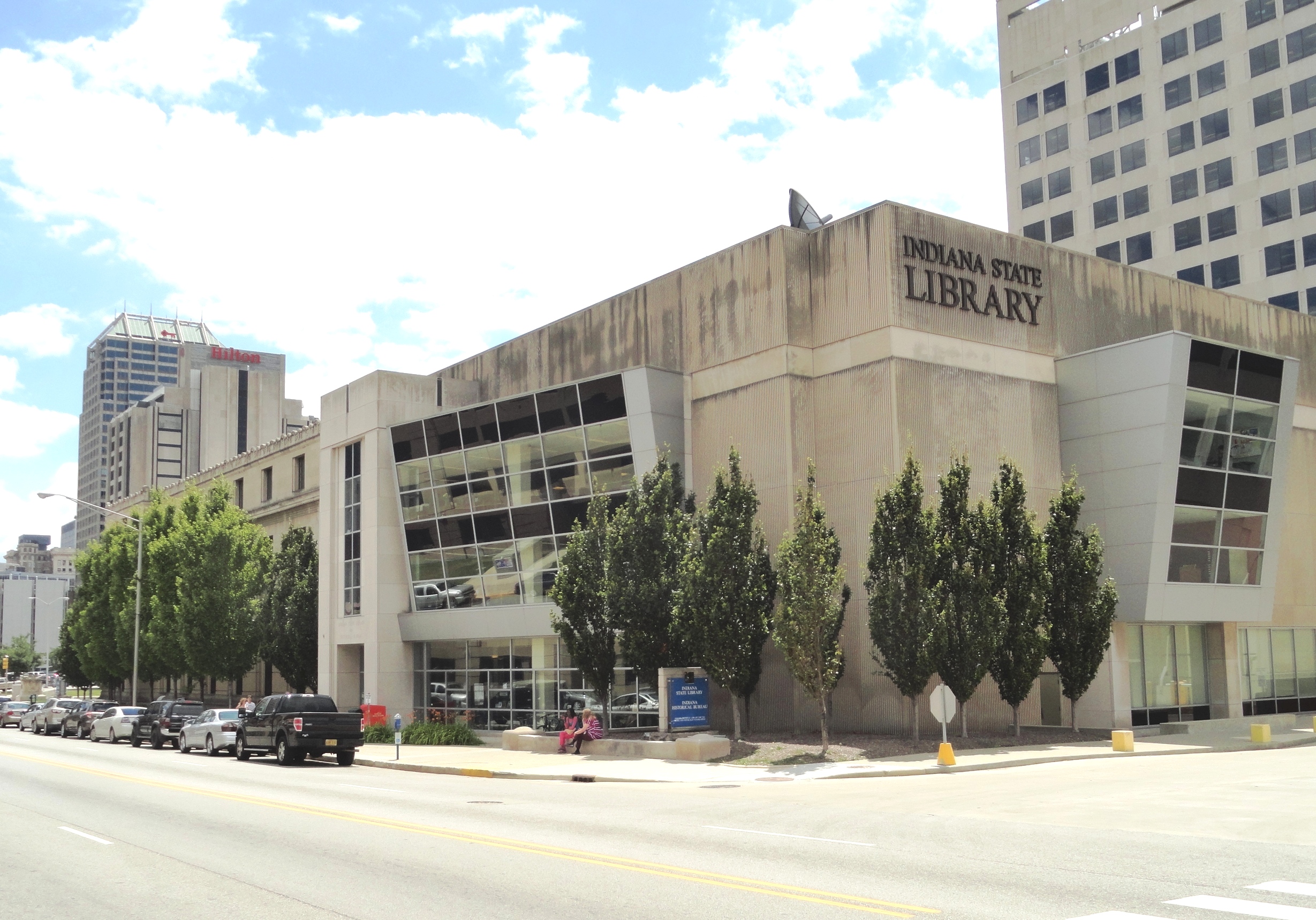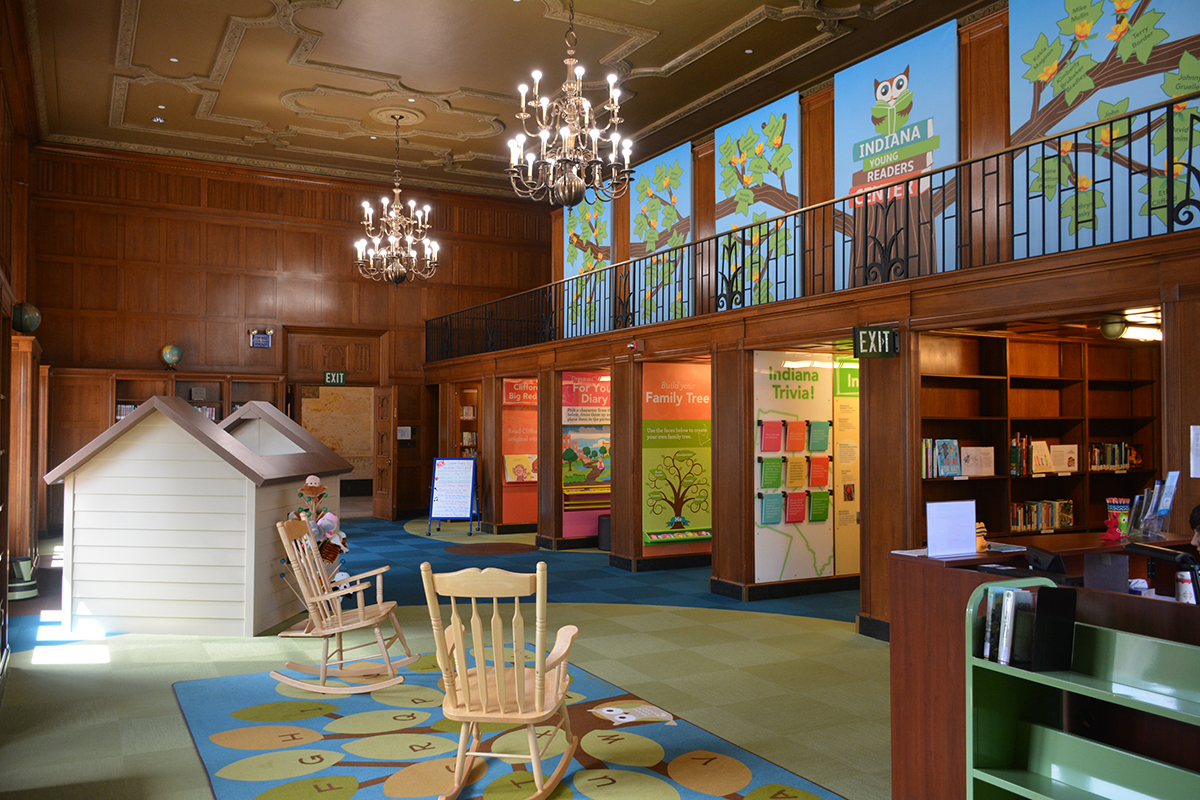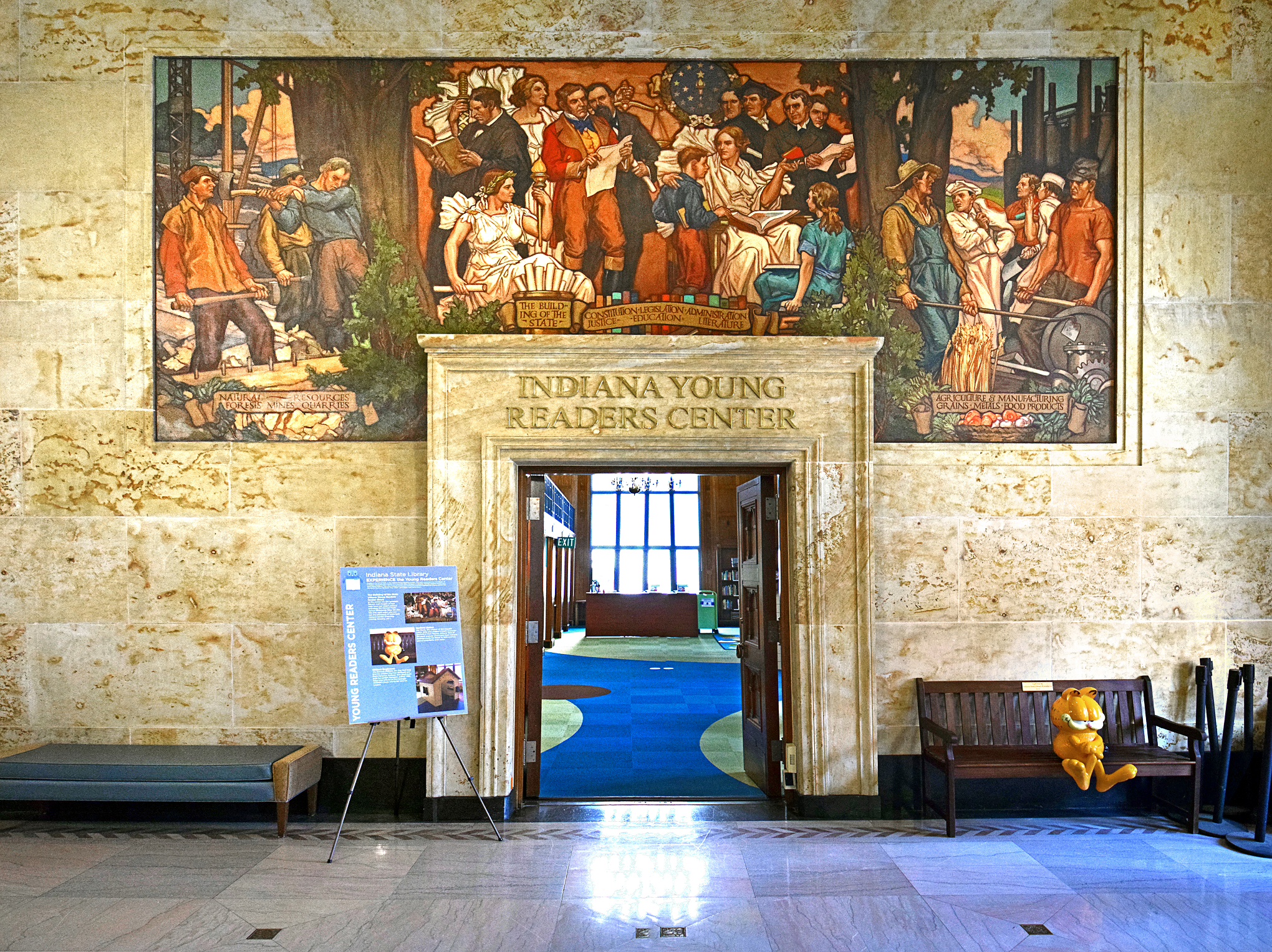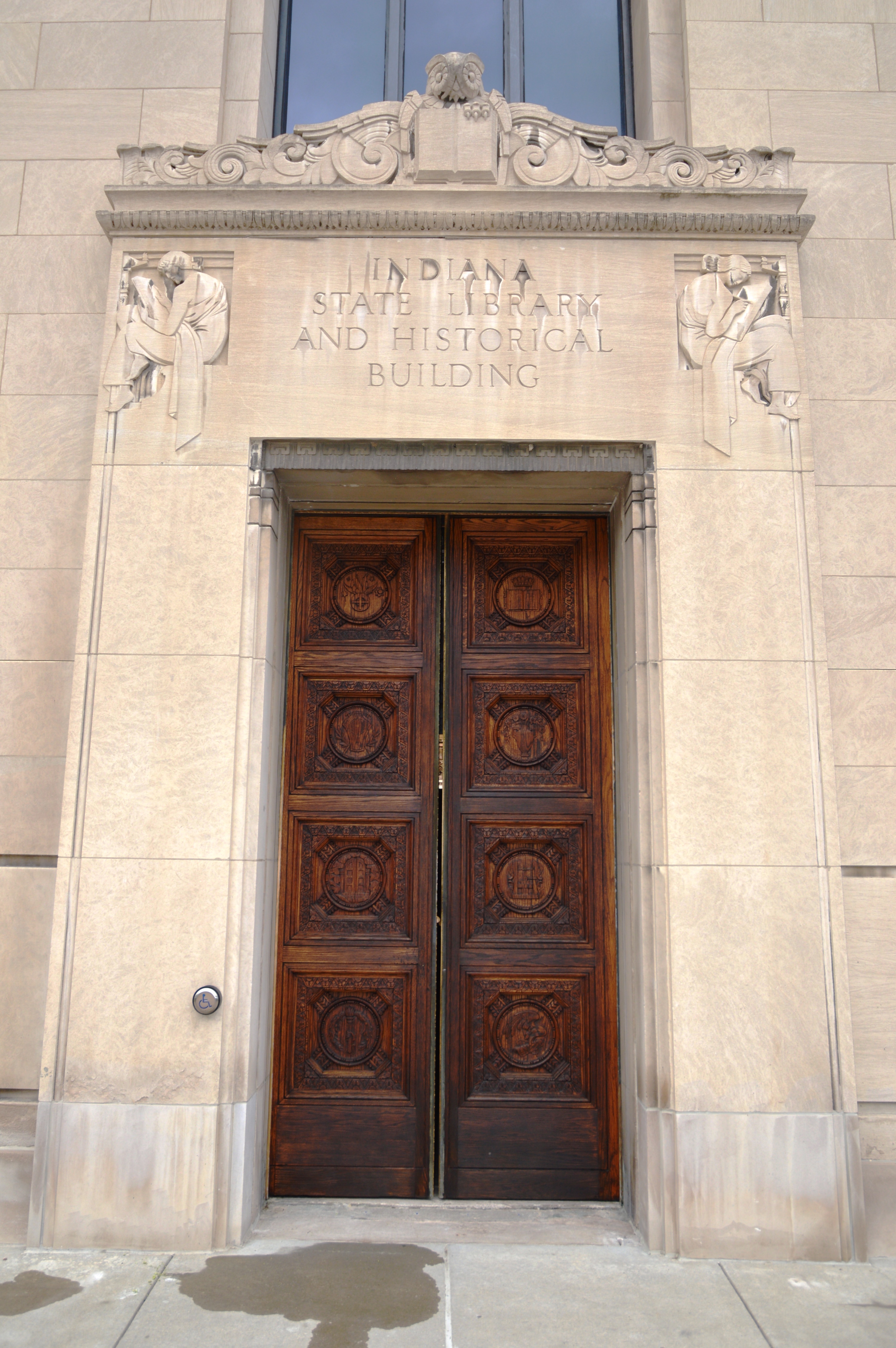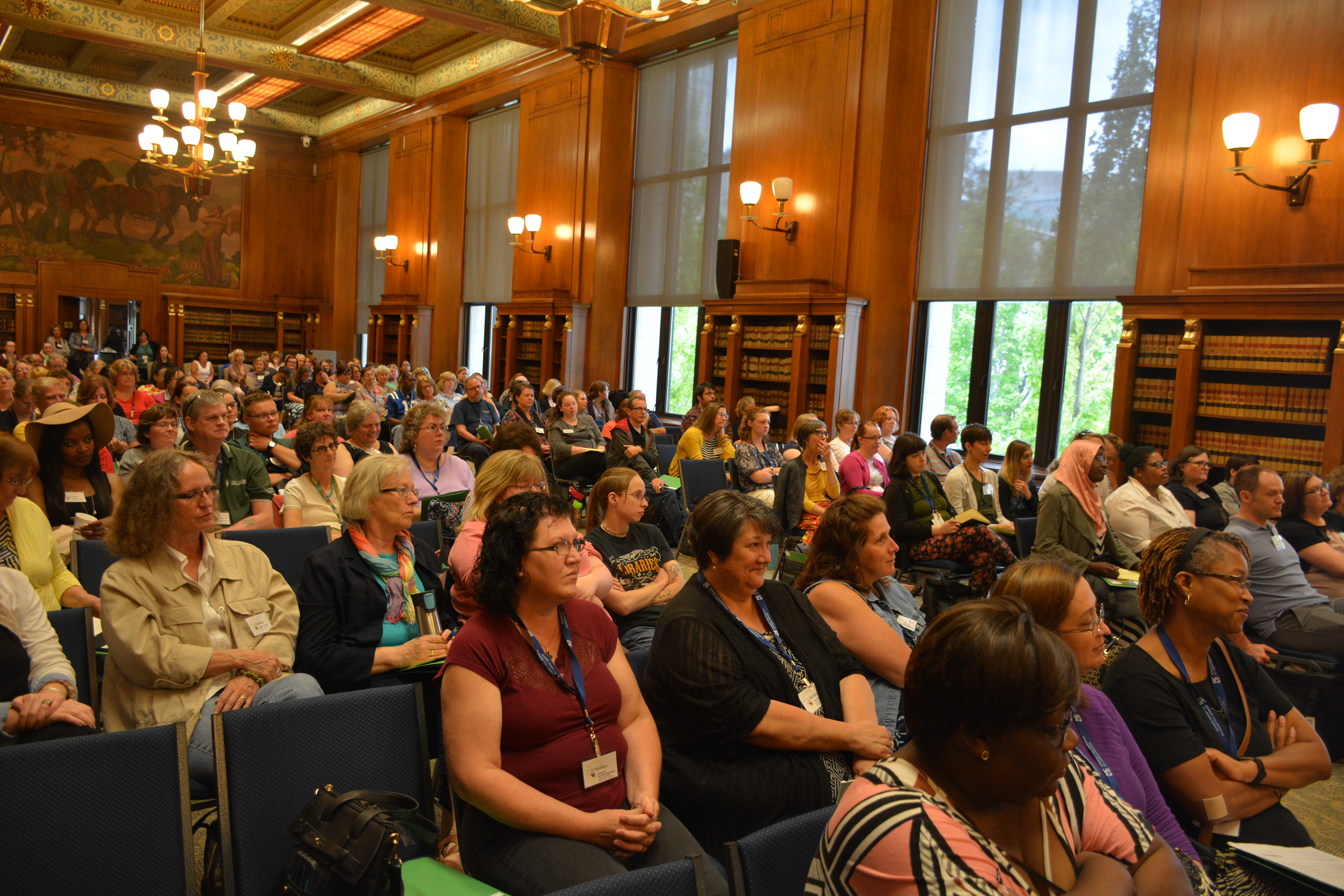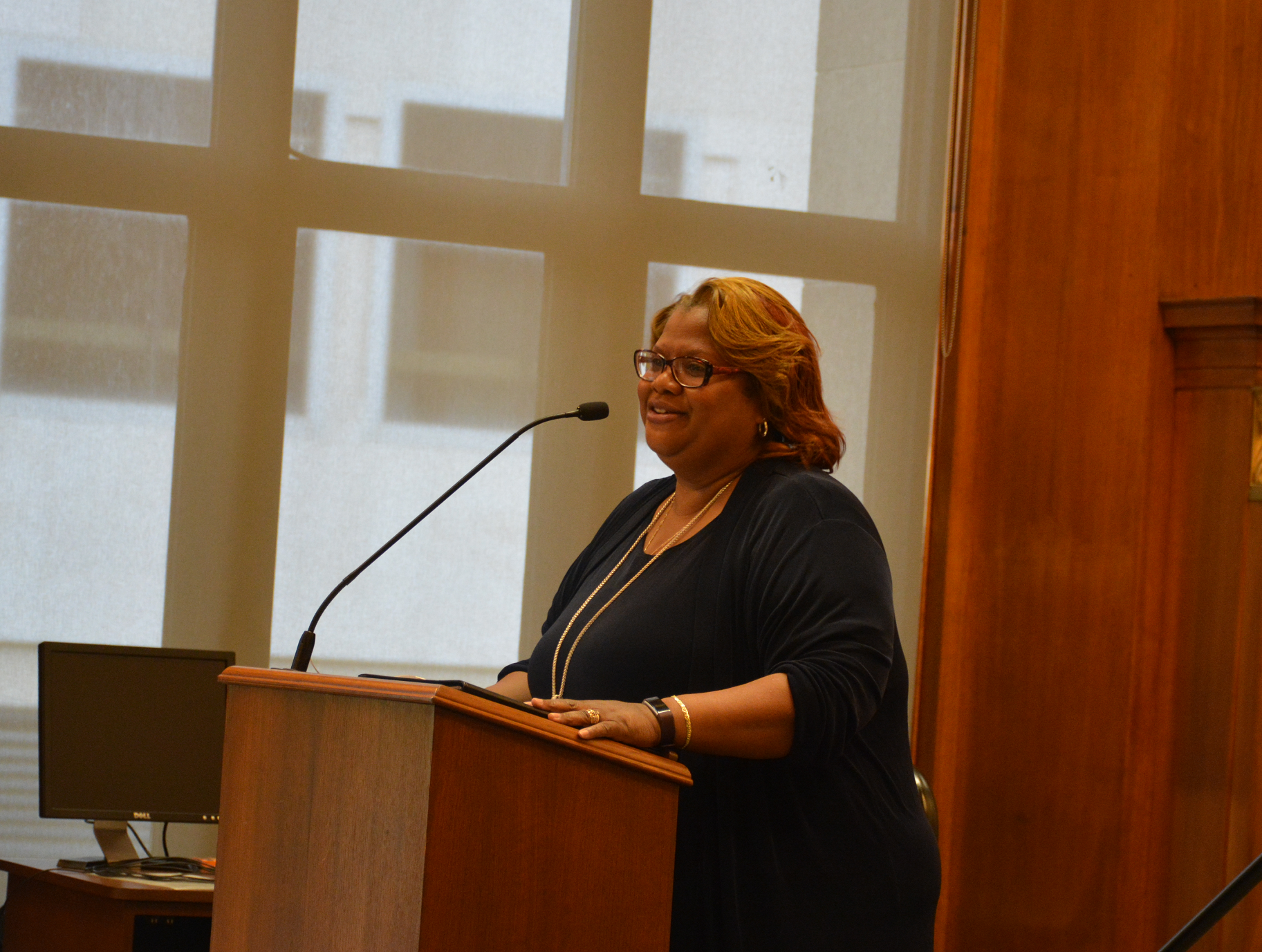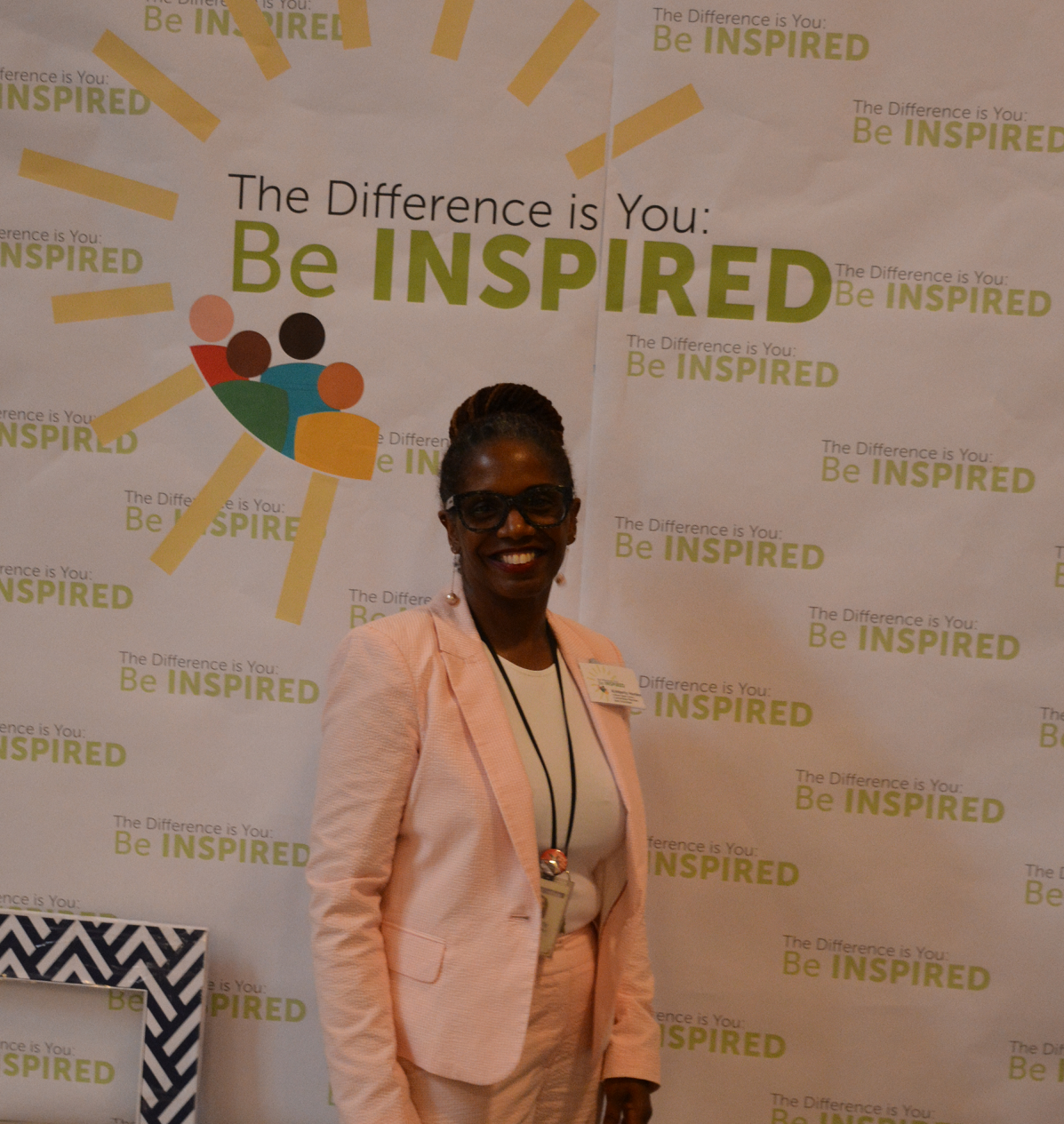Indiana State Library has been closed to the public since March 16. Public service staff continued to work in the building for another week until Gov. Holcomb issued Executive Order 20-02, a directive for Hoosiers to stay home. Previously, it had already been a strange week without any patrons in the building; just interacting with them over live chat and emails.
 Our building is one of the most beautiful in the state, but it’s designed for lots of people to be there. We also missed our patrons!
Our building is one of the most beautiful in the state, but it’s designed for lots of people to be there. We also missed our patrons!
 On March 23, the state librarian announced that the building would be closed and we would work from home. So, off we went with laptops, instructions on how to access our work electronically and whatever items we thought we might need to continue to serve the public.
On March 23, the state librarian announced that the building would be closed and we would work from home. So, off we went with laptops, instructions on how to access our work electronically and whatever items we thought we might need to continue to serve the public.
Working from home was a new experience to most of us and we realized that we missed each other. If you have never worked from home, it brings both rewards and challenges. After the first week, I polled my colleagues to see what they liked and did not like. Overwhelmingly, they responded with “did not like” and “I miss the building, the patrons and interacting with my co-workers the most.” While we are still on live chat and available by email and phone, it is the personal interaction that makes being a librarian fun and interesting!
There are many advantages to working from home, but the ones most reported are the “relaxed dress code” and that short commute. One librarian reported, “I have only have a 20-second commute to my home office, and there’s no traffic. Normally, I commute 40-50 minutes one way each day.” Being around family all day has its blessings and its curses. Many people have loved being around their pets and “having the cat sleep on my lap while I do my work,” but one colleague said, “That _ _ _ dog is driving me crazy” – the dog she loves to spoil. Our surroundings can affect our adjustment, too. Many of us work in cubicles at the library, and one librarian said, “My best is having windows in my office. I have sunshine and fresh air and it’s great, but my worst is my decrepit and uncomfortable home office chair that I had already planned to replace in April, but am now stuck with.”
A commonly-reported downside was not having access to printed material. We have a robust digitization program, but the State Library has millions of books, Indiana newspapers on microfilm, one-of-a-kind pamphlet collection and maps that are not available online. Besides needing these for research, many of the staff just miss being around those books.
 We have learned some valuable lessons from this necessary quarantine about our work life, our home life and ourselves. One librarian said working from home has forced her into a routine and “gives my life structure so that I do not turn into a complete couch potato.” Many reported a new appreciation for balancing work and home life and the needs of their families, “having to juggle the demands of two small children with both my spouse’s and my work” and “my best is that I get to interact with my family, spend more time with them, on breaks and throughout the day. It is actually fun, because they are so entertaining.”
We have learned some valuable lessons from this necessary quarantine about our work life, our home life and ourselves. One librarian said working from home has forced her into a routine and “gives my life structure so that I do not turn into a complete couch potato.” Many reported a new appreciation for balancing work and home life and the needs of their families, “having to juggle the demands of two small children with both my spouse’s and my work” and “my best is that I get to interact with my family, spend more time with them, on breaks and throughout the day. It is actually fun, because they are so entertaining.”
 For myself, I have learned to appreciate my access to electronic connections and those people who are there to assist me when they do not work, the ready advice from my administration and colleagues about a myriad of issues that come up during the day. I miss the warmth, friendliness and professionalism of the library staff, and of course, just being in the beautiful Indiana State Library building!
For myself, I have learned to appreciate my access to electronic connections and those people who are there to assist me when they do not work, the ready advice from my administration and colleagues about a myriad of issues that come up during the day. I miss the warmth, friendliness and professionalism of the library staff, and of course, just being in the beautiful Indiana State Library building!
This blog post was written by Marcia Caudell, supervisor of the Reference and Government Services Division at the Indiana State Library.

